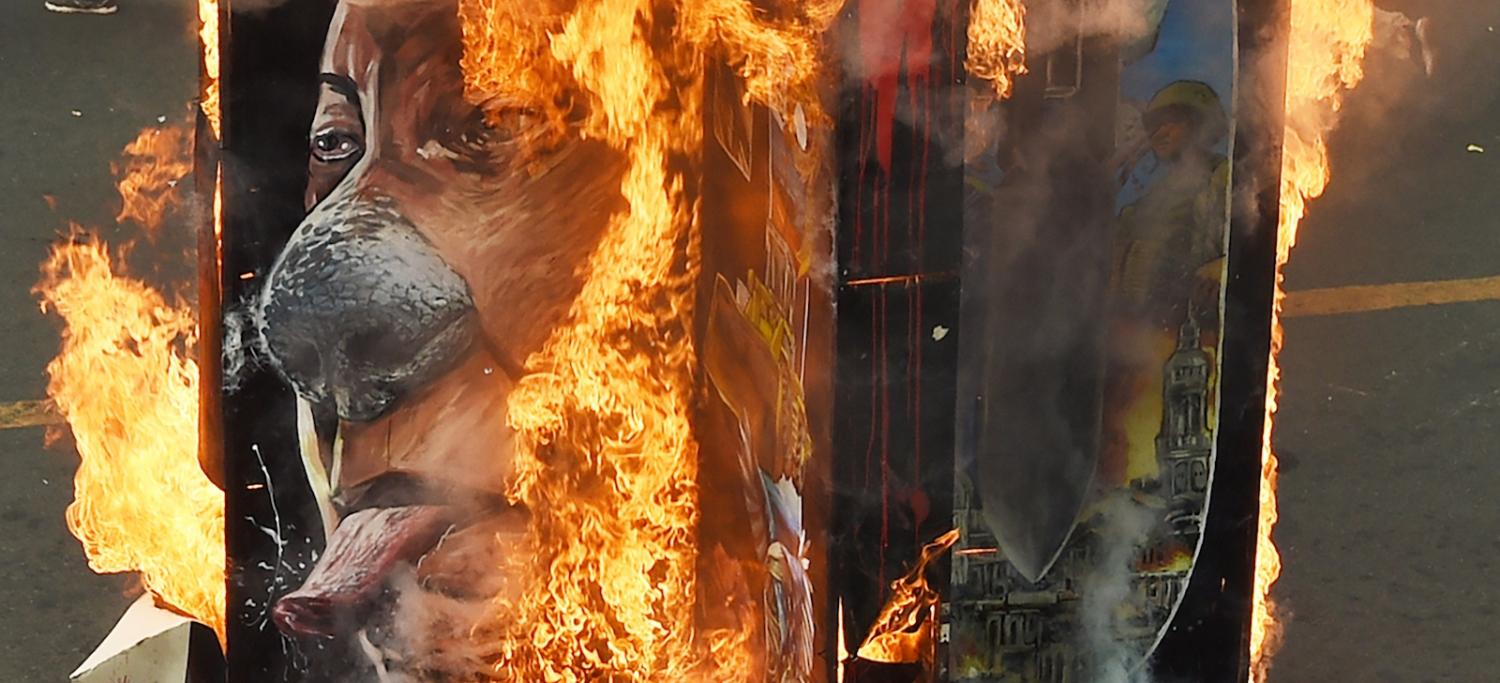On 29 January, over 24 hours after Datu Jomorito Guaynon and Ireneo Udarbe were reported missing in downtown Cagayan de Oro, local police in northern Mindanao announced that the two activists had been arrested.
Udarbe and Guaynon are both regional leaders organising Lumads (a catch-all Visayan term for Mindanao’s indigenous peoples) against resource extraction and military encroachment on ancestral lands. However, authorities have accused the pair of leading militant groups and serving as recruiters for the New People’s Army (NPA), an armed communist group considered a terrorist organisation by the Philippine government.
This is not a first for Guaynon, a regional chair of the Lumad group Kalumbay. Guaynon told me last year he and his contemporaries were recurrent victims of “red tagging,” or the false branding of activists as communist insurgents. Although he sharply denies any personal association with the NPA, such a label can be fatal in the Philippines. President Rodrigo Duterte has offered bounties to civilians, including Lumads, to kill suspected NPA members on sight and has urged troops to shoot female rebels “in the vagina.”

The practice of “red tagging” – which has ensnared journalists, labour groups, and politicians throughout the Philippines – has been condemned by international rights groups and in a statement by UN special rapporteurs Cecilia Jimenez-Damary and Victoria Tauli-Corpuz, in which they slammed the “unfounded” nature of the links between Lumads and militants. Shortly after the statement was published, Tauli-Corpuz was forced to flee the country after being included by Duterte on a list of suspected terrorists with links to communist rebels.
For Lumad activists such as Guaynon, existence has become a living hell. He and his contemporaries have long opposed private development on the fertile farmlands of northern Mindanao, much of which is claimed by Lumads as “ancestral domain” under the country’s robust yet inconsistently implemented Indigenous Peoples Rights Act. This designation grants indigenous claimants stewardship of their land, allowing them to refuse development or resource extraction despite not being considered private landowners. This right, when exercised, puts them at odds with investors who covet the land for commercial farming plantations. It also puts them at odds with police and armed forces, who have controlled Mindanao under martial law since the 2017 ISIS siege of Marawi, who are permitted under Philippine law to protect the interests of developers using force.
The fallout is deadly: Philippine rights groups say that, out of at least 63 murders of environmental defenders in 2017, 46 of those killed were based in Mindanao. Countless others, such as Guaynon, have been arrested and held in the country’s overcrowded jails, where they may be subject to inhumane forms of punishment.

In the Philippines, popular associations of leftist ideals with terrorism predate Duterte, although the current leader has cracked down on militants since initially opening negotiations with communist leaders.
Lumads, however, do not fit neatly on the modern political spectrum. Like indigenous peoples in other parts of the world, they encountered centuries of colonial persecution. In the late 1970s, they watched as Ferdinand Marcos-era Filipino migrants seized their ancestral lands for agriculture and mining. Lumads and NPA members often occupy adjacent territory, and the NPA does recruit disaffected Lumads, but the groups share little aside from common enemies. Unlike NPA leaders, the overwhelming majority of Lumads have no desire to violently overthrow the Philippine government.
In Mindanao’s Lumad communities, the Duterte administration’s initial promises of mediation with aggrieved indigenous activists now seem like ancient history.
Lumad leaders largely supported Duterte’s 2016 candidacy, hoping he would put an end to forced displacement and armed occupations of communities and schools while also halting mining development on the mineral-rich island. Since winning the presidency, however, Duterte has threatened to bomb Lumad schools and pledged to develop extractive industries, such as palm oil plantations, on indigenous lands. His push to liberalise foreign investment in sectors such as mining and farming by changing the country’s constitution has led to fears that, without protections for indigenous land claimants, further arrests and killings will be inevitable.
Kalumbay, the Lumad organization of which Guaynon is a regional chair, fears he is being denied a transfer to a provincial jail and could be forced into falsely confessing his loyalty to the NPA. But authorities have never provided evidence of Guaynon’s alleged links to communist rebels. In the past three years, police have arrested Guaynon at least twice on what he called “trumped-up” charges, which were quickly dropped, a tool he says is used by local authorities to intimidate and silence him.
When they were arrested on 28 January, Guaynon and Udarbe had been heading to meet Lumad representatives who had just attended a mediation dialogue with a local infantry battalion. Guaynon had recently accused the battalion of harassment, and local groups say a banner had been hung portraying him as a recruiter for the NPA.
In Mindanao’s Lumad communities, the Duterte administration’s initial promises of mediation with aggrieved indigenous activists now seem like ancient history. Lumads consider themselves inseparable from their ancestral lands – providers of food, water and medicine, the land possesses the spiritual roots of Lumad life. When this bond stands between investors and Mindanao’s abundant resources, however, these roots are increasingly being severed with brute force.

